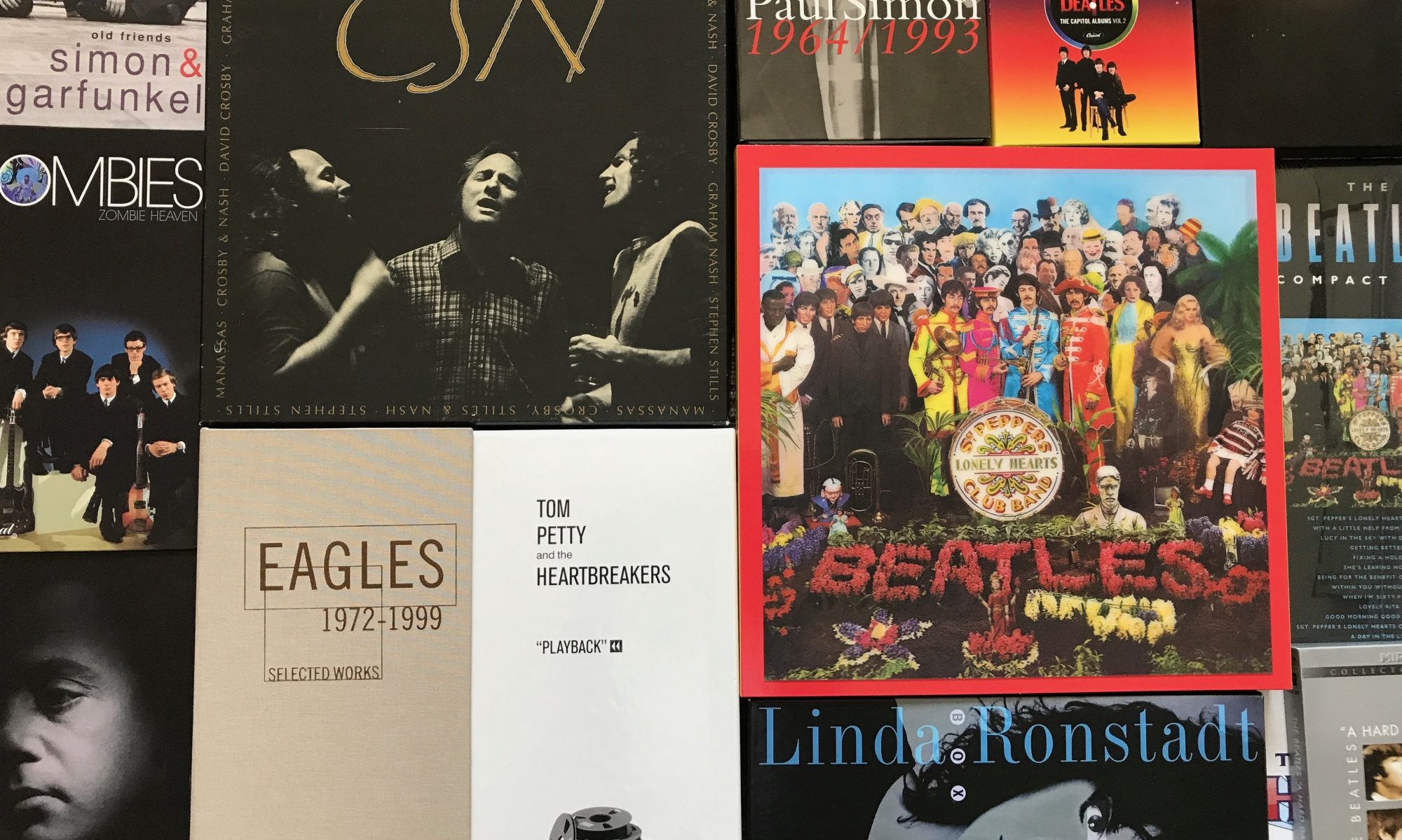Buffalo Springfield was the key to multiple successful careers.
“For What It’s Worth (Stop, Hey What’s That Sound)” was the only hit by Buffalo Springfield, but the group turned out to be much more important to Rock & Roll.
The seed for the band was planted when Stephen Stills met Neil Young in Canada in 1965. Both were in minor groups at the time. In early 1966, Neil Young decided to drive to L.A. (in an old hearse) with fellow musician Bruce Palmer to look for Stills. In those days, it would seem to be an impossible task to somehow find one person in L.A. After a week, they gave up and were heading out of town. Stephen Stills and Richie Furay happened to be driving the opposite direction on Sunset Boulevard. Stephen says he spotted the hearse, and Neil says he spotted Stephen. Anyway, It was meant to be.
The four of them formed a band, along with drummer Dewey Martin. They chose their name after seeing a sign for a steamroller company, Buffalo-Springfield. Soon, they had a steady gig at The Troubadour and a contract with Atco Records. Before the end of 1966, they had recorded their first album.
The album was released just as Stephen Stills wrote “For What It’s Worth” after seeing riots on the Sunset Strip. As a single, the song made it to #7 in Billboard, and was added to a new pressing of the album in March of 1967.
 Stephen Stills & Richie Furay sing “For What It’s Worth” on TV
Stephen Stills & Richie Furay sing “For What It’s Worth” on TV
Buffalo Springfield had two more albums and no more hits. Neil Young was wanting to record on his own, and the group decided to disband in 1968. I had only purchased the single “For What It’s Worth”, but then bought their album Retrospective in early 1969.
Atco did a great job of choosing the right songs. Besides their hit single, the best songs by Stephen Stills include “Rock And Roll Woman” and “Bluebird”. Neil Young’s songs that later became part of his concerts include ”Mr. Soul”, “On The Way Home” and “I Am A Child”. Richie Furay wrote and sang “Kind Woman”. The band’s use of banjo and pedal steel guitar for some of the songs put them on the leading edge of country rock. There was plenty of regular rock, along with some innovative arrangements.
On the back of the album was a paragraph from the head of Atlantic/Atco Records, Ahmet Ertegun:
“Of all the groups to have emerged in the middle sixties, Buffalo Springfield will be remembered as one of the most creative and exciting. The very power of the individual writing and performing talents of the members was also the reason for the breakup of the group. It was comprised of Stephen Stills, Neil Young, Richie Furay, Dewey Martin, and Bruce Palmer, later replaced by Jim Messina. More will be heard from all of them.”
At the time, February of 1969, it seemed like hype for a group that hadn’t really made it. Actually, it was very prophetic.
 Dewey Martin (drums), Jim Messina (bass & production), Neil Young (guitar), Richie Furay (guitar), Stephen Stills (guitar & keyboards)
Dewey Martin (drums), Jim Messina (bass & production), Neil Young (guitar), Richie Furay (guitar), Stephen Stills (guitar & keyboards)
The end of Buffalo Springfield meant the beginning of several more bands.
 Stephen Stills formed Crosby, Stills & Nash.
Stephen Stills formed Crosby, Stills & Nash.
 Neil Young recorded a solo album, and then added the band Crazy Horse. Of course he soon joined Crosby, Stills, Nash & Young.
Neil Young recorded a solo album, and then added the band Crazy Horse. Of course he soon joined Crosby, Stills, Nash & Young.
 Richie Furay and Jim Messina started the Country Rock band Poco.
Richie Furay and Jim Messina started the Country Rock band Poco.
 Later, Jim Messina joined Kenny Loggins to form Loggins & Messina.
Later, Jim Messina joined Kenny Loggins to form Loggins & Messina.
 Richie Furay got together with John David Souther and ex-Byrd Chris Hillman as The Souther-Hillman-Furay Band.
Richie Furay got together with John David Souther and ex-Byrd Chris Hillman as The Souther-Hillman-Furay Band.
 Manassas was a really great group of musicians brought together by Stephen Stills. They released two albums in the seventies.
Manassas was a really great group of musicians brought together by Stephen Stills. They released two albums in the seventies.
Of course, Stills and Young have had impressive solo careers, and have played on-and-off together for five decades.
All of this happened because Neil Young and Stephen Stills happened to be driving on Sunset Strip at the same time.


































































































